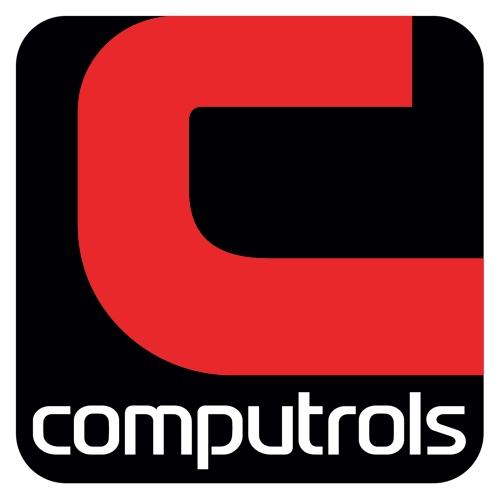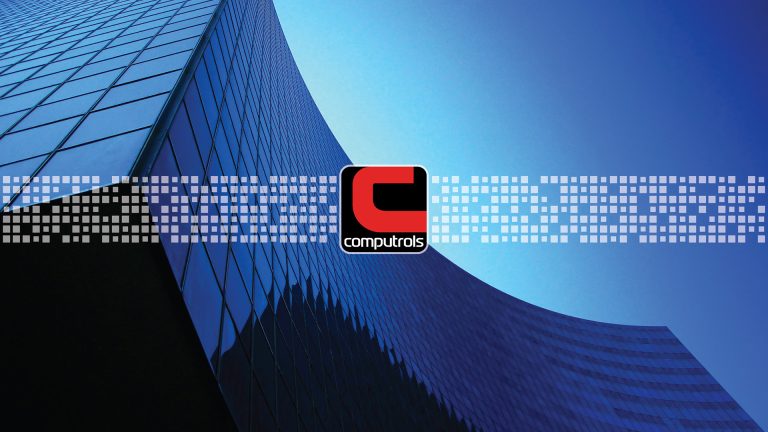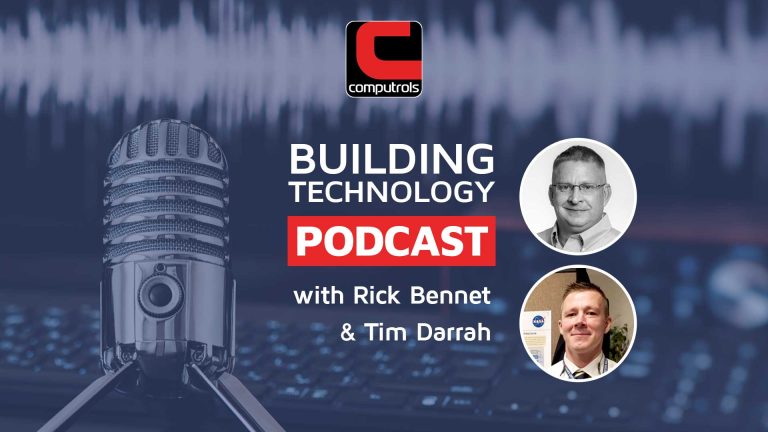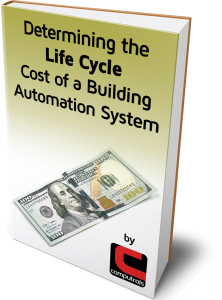In this educational webinar, our Director of Marketing and Business Development, Scott Holstein pulls back the curtain on the hidden costs of building automation systems and explains how the cost of operating and maintaining these systems is often overlooked in the initial purchase decision.
Webinar Transcript
[00:00:17.910] – Simon Berry
Hello, everyone, and welcome to our webinar today.
[00:00:22.050]
First of all, I’d like to thank you for attending. We’re excited to have you here and look forward to sharing with you the hidden costs of a building automation system. This topic should be of particular interest if you are involved in any financial or budgetary decisions. For those who aren’t familiar with Computrols, we are a US manufacturer of building automation controls based in Gretna outside of New Orleans, and we are primarily known for a HVAC control system. Some of our differentiating factors would be a lifetime warranty, our ability to integrate to just about any third party system, including a lot of our competitors, legacy systems and our drive to empower the end user through simplicity in everything we do or make. We excel in removing ongoing lifecycle costs from building automation systems, and it’s prevalent in everything we do.
[00:01:19.440]
Allow me to introduce you to our director of sales and marketing, Mr. Scott Holstein, who’s been with Computrols for over five years now and like me, came into the industry brand new and having to learn it from scratch. Scott has quickly become an authority within the industry by creating and pushing out a huge amount of educational content, such as today’s webinar, that will better inform those in our industry and shine a small spotlight on building automation so it may hit the radar of school leavers.
[00:01:52.320]
With that, I’ll hand you over. Scott?
[00:01:58.220] – Scott Holstein
Thank you, Simon, and I’ll briefly turn on my video on here, so everybody can see me and know that this is a live recording here, but thank you for coming to our webinar today. This is a passionate topic for me and Simon, and really everybody at Computrols. As Simon mentioned a lot of what we do at Computrols is aimed at reducing a lot of those ongoing hidden costs that we’re going to talk about today. So without further ado, I’m going to go ahead and jump into our topic.
[00:02:31.420]
So when we look at building automation systems as a whole, particularly on the front end, they are typically going to be a capital expense. And because they are a capital expense, that initial expenditure is really heavily scrutinized. A lot of times and I don’t want to say more often than not, but oftentimes it’s a it’s a low bid situation, and when you start to consider the fact that you’re going to have your building automation in your building for 5, 10, 20 years even, it’s not quite the same as really any service partner as you’re going to partner with for your building.
[00:03:12.930] – Scott Holstein
So we look at service partners for building automation systems as real partners, because they’re going to be in your building on a regular basis. They’re going to be working with you to ensure t hat your building’s comfortable, safe, and ultimately that building occupants are happy with the environment. So today we’re going to talk a little bit about the initial cost and then we’re going to really focus on those operation and maintenance costs.
[00:03:41.120] – Scott Holstein
So the initial cost is going to vary quite a bit based on a few factors, the building itself is going to be the biggest factor. Is it a new building or is it an existing building? Obviously, with new buildings, you have a whole different process than you built with existing. Since we’re all mostly working with existing buildings today, that’s going to be our focus. Then you think about the size of the building. If your building is larger, it’s going to tend to have more controllers, more sensors, which is going to lead to some additional costs.
[00:04:14.270]
You also need to consider the industry when we start looking at critical environments like hospitals and data centers, those are really high demand facilities when it comes to automation systems and the fact that they need to be working perfectly almost at all times. And then we look at the application of the system. So are you upgrading your current system? Meaning are you just getting the latest and greatest hardware or software for that system? Typically with an upgrade, you’re working with the same service partner with the same manufacturer, simply upgrading some pieces of that system.
[00:04:56.900]
Obviously, in a replacement situation, you’re looking at a lot bigger investment. So you’re talking about ripping out, replacing controllers, infrastructure and trying to really start from scratch in many scenarios. And then the third scenario is going to be integration. So are you going to be working with potentially a new service partner that’s going to be leveraging some of that existing infrastructure? So all things that you need to take into account when you’re looking at the initial costs, because ultimately that’s going to affect the service partner and manufacturer that you choose to work with could greatly affect how much you end up spending on that ongoing maintenance and operational costs.
[00:05:46.520]
So this is a classic 80 20 situation where the majority of building operators are not really getting the most out of their building automation systems, and this can greatly impact the ongoing operational costs of a facility.
[00:06:03.520]
So we look at these numbers and we say, why, well why? Why do most building engineers not use the majority of their building automation systems? So a few different reasons. It could be the fact that you are just limited by your personal skill set. Does… Is your building engineer well-trained enough and have the background to be able to operate a building automation system.
[00:06:30.730]
You want them to be doing that. Something else could just be a lack of training. If if you have a new building engineer or even you have an existing building engineer with a new system, do they have the access to the level of training that they need to successfully run that system largely on their own, or are they going to be dependent on that service partner? And then all too often we see in our industry is they’re, frankly, just limited by the system that they have or the service partner that they have.
[00:07:06.080]
They’re limited by their password levels, what modules they have access to, and sadly, this is this is actually a business practice within the building automation industry, and it makes you more dependent on that service partner. So all the things that you want to consider, because really this is what is going to drive a lot of these ongoing costs.
[00:07:28.610]
So are you are you going to be able to do any of this in-house? And how much of it and how much of it you going to be dependent on your service partner for? So without the building, without the building operators being able to operate their BAS, obviously you’re in a little bit of a bind there. And then we look at the maintenance agreements and something that I always tell building engineers is your maintenance agreement should really be commensurate with how comfortable you are operating this system on your own.
[00:08:00.950]
If you’re pretty, savvy and you can solve most issues or you can troubleshoot with someone remotely even and get them and get those issues remedied, your maintenance agreement, maybe you don’t need one at all. Maybe what you need is a few hours a month where somebody comes by and fixes the issues that you weren’t able to solve and helps you troubleshoot. Maybe a maintenance agreement includes software updates.
[00:08:34.560]
You have to understand our software, our software updates, one – required, two – necessary and three – what is the cost of a software update? And is it giving me security patches? Is it actually giving me access to these new features that are going to be really helpful for operating the system? So you might have software updates included in there. Sometimes maintenance agreements simply give building operators ‘access to service’. So there may not be any number of support hours included in that maintenance agreement. By paying for this maintenance agreement, you simply have easier and quicker access to getting service on your building when you do have problems.
[00:09:21.260]
And you may still have to pay for that visit, however, you’re going to get quicker response times and things like that. So you want to understand what comes along with that maintenance agreement and if they’re going to be additional costs on top of that.
[00:09:39.810]
Let me look at adding new components to your system, so oftentimes in an integration, for example, you’re you’re coming in and you’re going to talk to third party controllers, you’re going to be using a lot of existing infrastructure. But what happens when you need to add a new wing to your hospital, when you need to do a tenant improvement project or you have a remodel or a renovation in your building? What what goes into adding new components, to that system?
[00:10:10.430]
So you want to understand what kind of flexibility does that manufacturer provide? Can you use third party parts? Does your service partner allow you to do some of this yourself if you have that capability? And then we talk about the migration path a lot when it comes to adding new components. So in an integration scenario, you’re often going to be replacing the front end computer along with maybe the parent level controllers. Now, that’s all good and fine when you do that initial integration.
[00:10:43.020]
Now you have to ask the question, what happens when one of my VAV controllers fail? How how does that work? Do we need to run a new wire out there or do we need to install a whole new trunk of VAVs? You really want to understand what that process looks like for all those varying scenarios, for what happens when you get a new tenant in my building and we do a tenant improvement project, and what happens if we add on to the building?
[00:11:09.330]
So understanding what that process looks like is really important. And then again, you go back to if you have the bandwidth as well as the capability in-house to do some of this, do you have the flexibility with your service partner to work on that together? Something else to consider is in a lot of scenarios, there are manufacturers out there who will charge by they’ll charge license fees by the point count. So you’re adding points to your system. Let’s say you have ten thousand points and now you have now you have fifteen thousand.
[00:11:47.970]
Well, not only are you going to pay for the initial install of those controllers, the programming and everything that goes along with that, but there are license fees that are associated with point count. So you maybe have to upgrade your license to have more points or more users. And that’s something that you want to understand because oftentimes those license fees are recurring on an annual basis. So when we’re looking at those ongoing costs, that’s something to really pay attention to.
[00:12:24.860]
And then we look at warranties, not all warranties are created equal, I think that’s a fair statement. You want to understand what does this warranty cover? What do I get and how long does it last? Do I have a three year limited warranty? What are those limitations? And then what’s the extent of that coverage? And ultimately, what’s the process of making a claim on that warranty? So I have a controller fail within the first year, if I call my service partner, what’s the process?
[00:12:57.650]
Do they come out and troubleshoot and then determine, OK, this needs to be replaced or this needs to be repaired? What is the potential downtime look like for that? Do they have access to parts? Do you have spare parts on site? Those are all things to take into consideration when you’re looking at warranties, because, I mean, a warranty is great, but if you’re stuck there waiting for a part, that downtime could be more costly than the money that you’re going to save because you have the warranty. So it is something to consider when looking at that manufacturer and service partner. What does that agreement look like?
[00:13:45.120]
Then we talk about hardware failure. So this particularly comes into play with larger facilities. So when you’re looking at a high rise building or a campus or any any building where you’re looking at potentially hundreds of controllers or even more. Even at a one percent failure rate, you have, you know, potentially 10 controllers failing a year.
[00:14:10.620]
So you have to consider, is this something that I need a budget for? And then you have you have sensors, you have other pieces of equipment. So it’s all something you need to take into consideration. Beyond that, initial purchases as controllers fail, how often are they going to fail? How many might be looking at replacing per year? Because that’s not a cost that is necessarily something that we would just kind of toss into the O&M budget.
[00:14:39.300]
We may want to actually budget for that specifically. And then what is the process and cost for replacing those failed devices? So, again, a lot like the warranty I have this controller fail. What’s next? Do I need to call out my service technician to come and troubleshoot, to come and ultimately replace it? When does the programming happen? How quickly does it happen? Because, again, downtime can be a big, big problem.
[00:15:17.410]
And then something that we look at a lot at Computrols is the life cycle cost of building automation systems, and we want to know where that product is in the life cycle, because one of the biggest problems we have in the building automation industry for the last really 30, 40 years has been planned obsolescence. When a manufacturer will make the decision to obsolete a product or piece of hardware or software and essentially say we cannot support this product anymore. And what you’ll find is there’s not really backward and forward compatibility built in a lot of these products either.
[00:15:59.410]
So where a manufacturer may come to their customer and say, look, this controller’s been out there for 20 years now, we have newer technology that’s replacing it, you need to upgrade to this or we can’t support your system. You’ll say, OK, well, I’ll replace this controller then. And then they may also tell you, well, this new controller won’t work with your version of software. So you’re also going to have to upgrade that software as well.
[00:16:27.760]
And unfortunately, a lot of service partners aren’t really aware of what the life cycle of those individual controllers in those products are. So it’s difficult for them to even tell you where you are in that life cycle. But it’s something that you need to be acutely aware of because it could mean an extremely large expenditure at some point where it’s out of your hands and the manufacturer is telling your service partner, look, this is no longer supported.
[00:17:03.180]
Something that is also related to planned obsolescence in the building automation industry is we look at this as kind of a business decision as much as the technology is going to improve over the years if a controller’s still working effectively, our stance on that is… It’s working. Why replace something if it’s not broken?
[00:17:29.990]
So what we try to do is build backward and forward compatibility to everything that we manufacture. But frankly, that’s not usually the case. So it’s just something that you want to be aware of is OK at investing in this now, how long down the road am I going to look at this? Am I going to need to look at this addressing obsolete controllers or obsolete software in the future?
[00:17:57.980]
So another cost to consider is potentially energy costs and something I always am very frank about is building automation systems do not save energy by themselves.
[00:18:10.100]
If you have one building automation system in place and you replace it with another building automation system and you have the exact same sequence of operations, chances are you’re not going to save energy there. Building automation systems are a tool to manage your energy consumption and and how your system works. But by itself, it doesn’t really promise energy savings. Ultimately, where you get energy savings within building automation systems is having the visibility to see inefficiencies. And we are always a big proponent of building engineers identifying a lot of these inefficiencies because they see the way the building starts up.
[00:18:54.890]
They know at what in the middle of the day where it gets hot and they know where they’re getting the most cold calls from. So they understand the way that building operates. And if you can give them the visibility into that system to solve those problems, that’s where energy savings can really come into play. Now, there are companies out there that will give you guarantees that they’re going to reduce energy consumption. And that’s that’s fine and good. But you want to make sure that they’ve taken a good look at the way that your buildings are currently operating, because it’s not the same as putting a BFD on an air handler.
[00:19:31.430]
It’s just it’s not going to, by itself, save energy. So, most of this cost savings that you do have with energy savings, it’s established within the first few months these technicians will come in and they’ll look at how your building is operating and they’re going to tweak it and they’re going to optimize it. And eventually it’s going to get to a point where it’s about as efficient as it can be without making people uncomfortable. Something else you’ll have to consider also is when the season changes.
[00:20:07.040]
OK, now I need to I need to address that because now in my building is going to run differently and to be efficient running in the winter is going to look a lot differently than what it looks like to be efficient running in the summertime. So keeping in mind that a lot of the energy savings with building automation systems are going to be based on what kind of visibility you have into the system and the changes you’re able to make.
[00:20:36.500]
We focus on monetary cost because that’s really what is the most tangible to us, but there are some other non-monetary costs and other factors to consider in this decision.
[00:20:49.670]
So we look at something like comfort, in a let’s say a, commercial real estate facility. If you work in commercial real estate, you know, the tenant satisfaction is the most important thing. And you also know if tenants are not comfortable, chances are when their lease is up, they may be looking elsewhere. So you look at how is my tenant retention affected by the comfort provided by HVAC, lighting, etc.
[00:21:22.350]
So, although there’s not a direct monetary cost associated with comfort, there could be if that’s really what ultimately could be a factor in driving a tenant away. And then we look at productivity. There are a lot of studies out there now that have shown that under the right conditions, the people are more productive, which I don’t think should be too much of a surprise to anyone. But if you’re running a corporate facility and you have hundreds of employees under that roof and you’re not providing that optimal environment, what are you costing the company?
[00:21:57.330]
It’s hard to put a monetary value on that, but there’s certainly something to be said. And then we look at liability costs, so within building automation, you also you also include things like access control and fire alarm systems that have a very direct potential for liability. But since we’ve been living in this pandemic for coming up on 10, 11 months now, I think we’re all really aware of the air that we breathe and the quality of that air.
[00:22:30.550]
And that’s another potential liability is, are you able to guarantee that you are providing the best possible environment? So beyond what we talked about with, OK, you’re going to have service calls, maintenance, warranties, etc, you’re also going to have costs that aren’t necessarily directly attributed to the building automation system. But at the end of the day, you can certainly apply that in this scenario.
[00:23:08.560]
So I pulled this quote from Gartner.com, and it’s actually associated with I.T. networks and things like that, but I find that it really applies pretty well to building automation systems, but taking a total cost of ownership approach.
[00:23:25.180]
So that first cost is really what people are looking at. Almost all of the time these days where it’s what is that initial cost, what does that capital expense, they’re going to look at that they’re going to beat up their vendors and try to get that number down as much as they can. But really, you need to start looking at it as what is it going to cost me to own this system over the life of this building or the life that you’re associated with this building where you’re talking about for college campuses, municipalities, hospitals, these buildings are typically owned and operated by the same group of people for decades.
[00:24:08.980]
And so you need to start considering, I think, beyond that initial cost, what is it going to cost to operate this system? And what is it going to cost to train my team and keep them up to speed? What productivity losses could there possibly be? So, again, I think that we’ll send some information out on this as well. We’ve written a lot on the topic of lifecycle costs and total cost of ownership of these systems.
[00:24:36.130]
And it hits a lot of the points that we discussed today. But when you’re looking at that initial investment, you really need to consider beyond what that first cost is.




